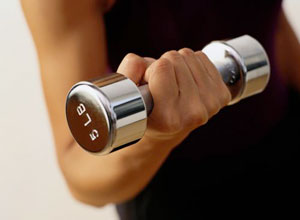Strength & Conditioning
Strength & conditioning for rehabilitation involves specific easy to do exercises. As a result the exercises serve to load the neuromusculoskeletal systems capacity. Hence they deal with load to reduce the risk of injury. Such as conditions like tendinopathy (golfers and tennis elbow and Achilles problems) respond to specific loading patterns in both acute and chronic cases.
 Firstly, if a tissue fails it is usually because it cannot tolerate the forces that go through it. Therefore, using specific exercises to build the strength and tolerance of a tissue increases its ability to withstand these forces and increases its capacity.
Firstly, if a tissue fails it is usually because it cannot tolerate the forces that go through it. Therefore, using specific exercises to build the strength and tolerance of a tissue increases its ability to withstand these forces and increases its capacity.
Also, there is now overwhelming evidence in support of specific loading techniques for reduction in pain and disability. Hence, our musculoskeletal and nervous systems not only like movement but need it to stay healthy. In addition, specific exercises will be given to load your bodies capacity to deal with load and to reduce the risk of injury.
Furthermore, a number of strategies are involved, including injury treatment, graded return to activities and exercise. In addition, education and cognitive-behavioural techniques, can be used to help lessen the pain and disability one experiences. In short, people with LBP can distinguish between the pain or ‘hurt’ they are feeling from any concerns about ‘harm’ being done to their back. To summarise, it is easier to participate in rehabilitation.
Assessment
An assessment will help make a diagnosis. Initially, from the diagnosis we can educate and treat appropriately. Thus reducing pain levels and restoring normal function. Then, after decreasing pain levels it is important to engage in some form of rehabilitation. Finally, rehabilitation is important to reduce the future potential for injury.
Many different forms of exercise seem to help LBP. Like, aerobic exercises like walking, cycling, swimming as well as exercises aimed at improving the posture, strength and mobility of the spine. Moreover, it does not appear that any one of these is always better than the others. Likewise, the most relevant factor is whether people continue with their exercise programme over time. Therefore, you should consider which form of exercise you enjoy most, and which you can do with little or no inconvenience.
Remember that many hobbies and daily routines can be considered exercise also. For example gardening, cutting the lawn, and using the stairs instead of the lift. More importantly, exercise is most effective when we also change the way we think about LBP. For example, some initial soreness is common in people with LBP who start to exercise.
Talk to Tuam Therapy Centre about exercise to suit you.
